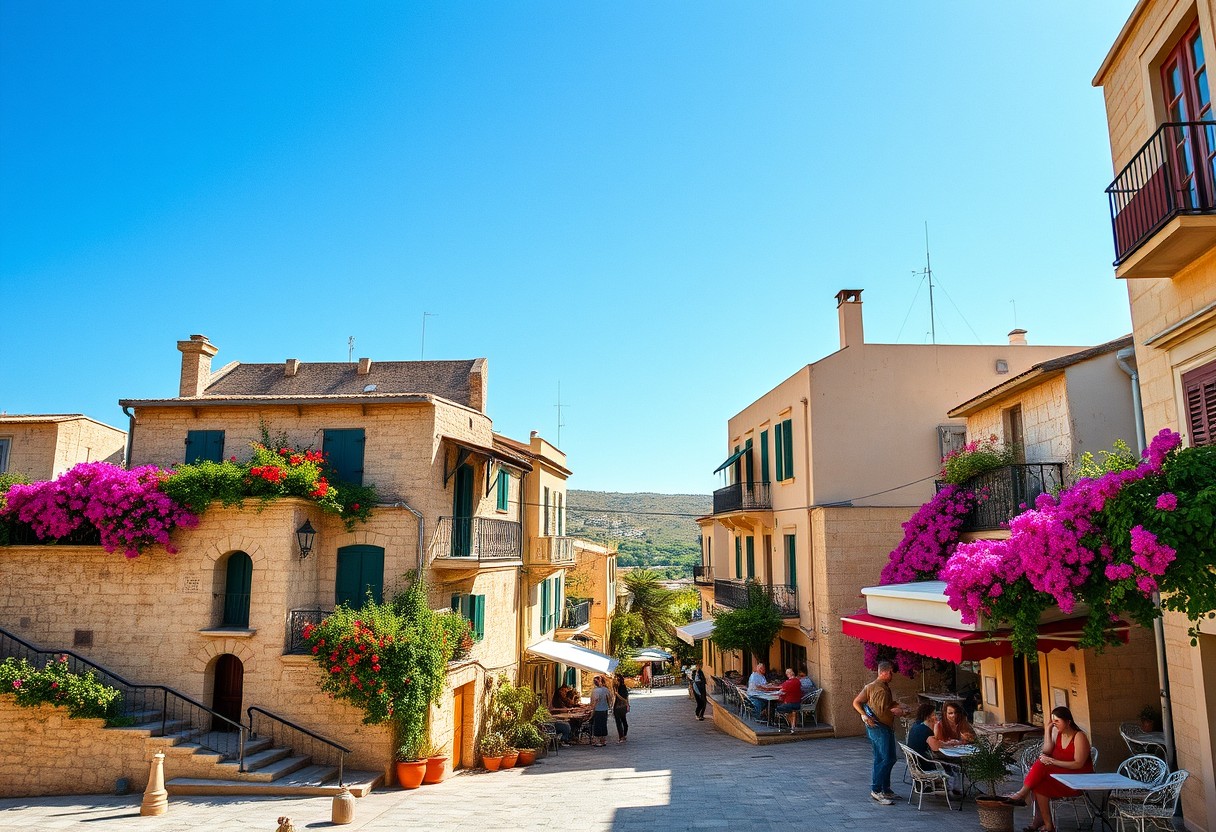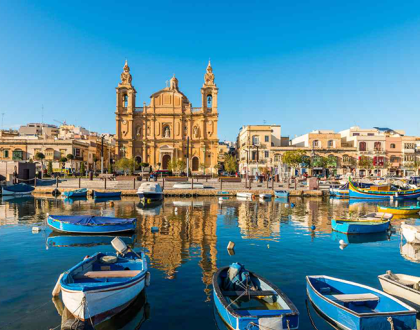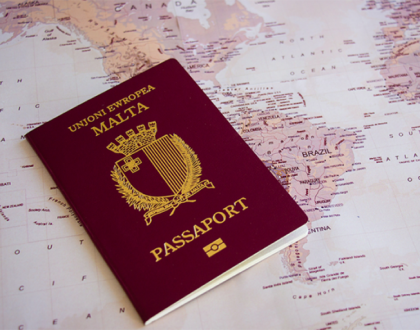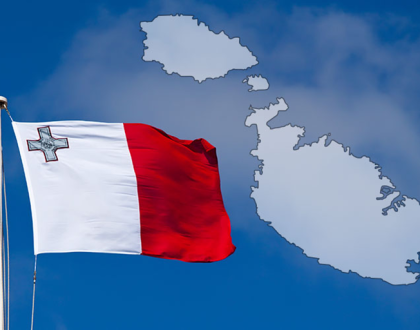Explore Malta’s Charming Villages

Many travelers overlook Malta's charming villages, especially during the quieter months of September and October. As the summer crowds disperse, these picturesque locales reveal their true essence, showcasing local traditions, cultural festivals, and exquisite landscapes. You can immerse yourself in the vibrant lifestyles of the Maltese people, explore stunning architecture, and savor seasonal delicacies that highlight the island's rich culinary heritage. Join us as we guide you through the enchanting villages waiting to be discovered during this ideal time of year.
Overview of Malta's Villages
Your journey through Malta's villages promises an enriching experience, revealing the very essence of the Mediterranean way of life. Each village boasts its own unique character, shaped by the rich history and diverse cultures that have influenced the Maltese archipelago over centuries. From charming hilltop settlements to quaint coastal communities, these villages offer a stunning array of landscapes, architecture, and traditions that are bound to capture your heart.
Historical Context
An exploration of Malta's villages inevitably leads you to their fascinating history. Many of these settlements date back to the time of the Knights of St. John, who sought refuge on the islands in the 16th century during the tumultuous era of the Ottoman Empire. You will find that the influence of these knights is evident in the architecture, language, and local customs, which have been preserved and cherished through generations.
An important aspect of the historical context is the way Malta's villages reflect various phases of colonialism and cultural blending. The British, French, and even the Phoenicians left their mark on the islands, leading to a rich tapestry of influences that can still be observed today. As you roam through these villages, you may encounter remnants of ancient fortifications, vibrant local markets, and religious festivals that showcase the harmonious coexistence of past and present.
Geographical Distribution
Any exploration of Malta's villages will reveal their strategic geographical distribution, which is primarily designed to take advantage of the island's natural resources and defenses. You will notice that many of these villages are located inland, atop hilltops, or near coastal areas, offering breathtaking views and protection against potential invaders. The layout reflects historical priorities of safety, agriculture, and trade, all features that continue to define the character of these settlements.
Maltas villages are concentrated on the main islands of Malta and Gozo, with each locality showcasing its own unique charm. The northern part of Malta is home to quaint villages like Mellieha and Naxxar, while the south features picturesque locations such as Zejtun and Marsaskala. In Gozo, you will find similarly enchanting spots such as Victoria and Xaghra, each offering their own slice of the island's rich cultural inheritance. As you navigate through these charming locales, you'll be both awed and inspired by the natural landscapes that frame them and the stories they hold within their stone walls.
Climate and Weather During September and October
Clearly, when you plan your visit to Malta in September and October, you will experience a transition in weather that pleasantly blends warm summer days with the cooler, more refreshing breezes of autumn. This makes your exploration of the charming villages even more enjoyable, as outdoor activities become a delightful experience. Malta's geographical location in the Mediterranean contributes to its mild climate during these months, allowing you to comfortably soak in the stunning scenery and cultural richness that each village has to offer.
Average Temperatures
September marks the tail end of the summer season in Malta, with average temperatures hovering around a warm 26°C (79°F) during the day and dropping to a comfortable 20°C (68°F) at night. As October arrives, you will notice a gradual decline in temperatures, ranging from approximately 24°C (75°F) during the day to about 18°C (64°F) at night. This gradual shift creates ideal conditions for exploring the Maltese countryside or charming coastal villages without the intense heat that the summer months may bring.
Average Temperatures
| Month | Average Day Temperature (°C) | Average Night Temperature (°C) |
|---|---|---|
| September | 26 | 20 |
| October | 24 | 18 |
Rainfall Patterns
Average rainfall in September is relatively low, with only about 9 mm expected throughout the month, meaning you can look forward to mostly dry days during your stay. By October, however, the likelihood of rain increases slightly, with an average of approximately 46 mm of rainfall. While intermittent showers may occur, they can actually serve to refresh the atmosphere and enhance your experience of the lush landscapes that surround Malta's picturesque villages.
Weather in Malta can be unpredictable, and this is particularly true during the shift from summer to autumn. While you can anticipate pleasant days, it is advisable to carry a light jacket or umbrella just in case. The occasional rain showers can surprise you, but they also bring a unique charm to your exploration as the landscapes appear more vibrant and filled with life.
Impact on Local Flora and Fauna
Flora in Malta during September and October showcases a remarkable resilience and adaptability. The transition in weather means that you will observe a diverse array of plant life adjusting to the cooler temperatures and occasional rainfall. You may come across flowering plants that are at their peak, alongside the vibrant autumn foliage that emerges as the season progresses. The lush greenery provides a beautiful backdrop during your village explorations, particularly in areas like Buskett Gardens or along the scenic coastal paths.
As for fauna, this time of year signifies a change in animal behavior as well. Many migrating birds pass through Malta during these months, making it a prime spot for birdwatching enthusiasts. You may also notice various mammals and insects becoming more active after a summer lull, keenly responding to the changing climate. The delightful interplay of local flora and fauna offers a rich, immersive experience during your visits to Malta's charming villages.
Temperatures remain fairly mild, allowing you to comfortably enjoy your time outdoors, whether you're hiking, biking, or simply taking leisurely strolls through the vibrant landscapes. So, as you explore, take a moment to appreciate the natural beauty around you, as both the changing weather and the lush environment enhance your cultural journey through Malta's enchanting villages.
Notable Villages to Explore
Mdina: The Silent City
Not many places can transport you back in time as Mdina does. Explore the narrow cobblestone streets lined with impressive Baroque architecture and ancient fortifications that whisper stories of the past. This fortified city, once the capital of Malta, offers a tranquil atmosphere, making it a perfect escape from the bustling modern life. As you wander through its maze-like paths, you will discover beautiful palaces and charming squares that invite you to pause and soak in the surroundings.
Not just a geographical location, Mdina is also known as “The Silent City” due to its quiet ambiance and minimal traffic. Take a moment to visit the stunning St. Paul's Cathedral, with its magnificent dome that dominates the skyline. As the sun sets, the golden hues of the buildings illuminate the streets, creating a magical aura that beckons you to linger a little longer.
Rabat: A Blend of Culture and History
Mdina may be the city's crown jewel, but just outside its walls lies Rabat, a village that offers a fascinating mix of cultural experiences and historic charm. Explore the Catacombs of St. Paul, where early Christians once buried their dead, and feel the weight of history surrounding you. The village's tight-knit atmosphere is revealed in local shops and eateries where you can sample authentic Maltese cuisine.
Rabat is a haven for history enthusiasts, featuring numerous historical landmarks, like the charming Domus Romana, which showcases the remains of a Roman villa. Among the local cafes and bakeries, you can easily discover how the village blends tradition and modernity, making it a delightful addition to your itinerary.
A visit to Rabat is a chance for you to experience the intertwining of cultures as evidenced in the architecture, food, and warm hospitality of the locals. You are likely to appreciate how this village preserves its rich history while embracing the contemporary world around it.
Marsaxlokk: A Fishing Village Experience
Notable for its colorful traditional boats, called “luzzu,” Marsaxlokk is a picturesque fishing village that offers a glimpse into Malta's maritime heritage. Here, you can stroll along the waterfront promenade, indulging in the aromas of fresh seafood at the bustling market every Sunday. The vibrant hues of the boats and the clear blue waters create a captivating setting that seems practically made for Instagram.
The village's charm extends beyond its visuals, as you can engage with local fishermen and learn about their daily routines. Whether you choose to enjoy a lazy afternoon at one of the waterfront restaurants or participate in a boat ride to explore the stunning bays nearby, Marsaxlokk offers an authentic experience that connects you to Malta's fishing traditions.
History plays a significant role in Marsaxlokk's character, with remnants of its past visible in the quaint, pastel-colored houses that line the shoreline. The local market provides an array of fresh fish and artisanal products that reflect the deep-rooted connections between the villagers and the sea.
Għarb: The Gateway to Gozo
Explore Għarb, one of Malta's most scenic villages, nestled at the western edge of the island. This charming village boasts a rich history, with its stunning church, the Basilica of Our Lady of Ta' Pinu, attracting pilgrims from all over. The surrounding countryside offers breathtaking views and serene landscapes, making it a perfect spot for leisurely hikes and explorations. You can take in the allure of the natural features, including the nearby cliffs and coastal scenery.
For instance, if you venture a little further out you'll find the beautiful Dwejra Bay, known for its Azure Window, which adds to the village's allure. With its warm and welcoming atmosphere, Għarb captivates those who seek to experience both the cultural and natural beauty of Malta.
Local Festivals and Events
After a summer of sun-soaked beaches and bustling tourist hotspots, September and October offer a unique opportunity to immerse yourself in Malta's rich local culture through a variety of festivals and events. As the season shifts, the islands vibrate with celebrations that showcase the traditions, food, and community spirit of the Maltese people.
Cultural Festivals in September
Festivals in September are a vibrant burst of color and sound throughout Malta's villages. You'll find various local cultural festivities that highlight traditional music, dance, and gastronomy. Each village has its own unique celebrations, often coinciding with the feast of its patron saint. Attending these festivals allows you to experience authentic live performances, sample local delicacies, and engage in community activities that reflect the island's heritage.
As you wander through the festive streets adorned with lights and decorations, don't miss the opportunity to interact with local artisans displaying handmade crafts and artisanal products. The atmosphere is electric, as locals and visitors alike come together to celebrate their history, creating an unforgettable experience filled with warmth and hospitality.
Harvest Festivals in October
Events in October revolve around the harvest season, providing you with a unique glimpse into Malta's agricultural traditions. These harvest festivals celebrate the gathering of crops, particularly olives and grapes, and are marked by lively events showcasing traditional food, music, and dance. Various villages hold open-air markets where you can sample local produce, from freshly pressed olive oil to homemade wines.
Plus, many of these harvest festivals offer hands-on experiences, such as olive picking workshops or cooking demonstrations, allowing you to examine deeper into Maltese culinary culture. Participating in these events not only enriches your understanding of the island's traditional practices but also allows you to forge memorable connections with the locals and fellow visitors.
Religious Celebrations
Religious celebrations in Malta are deeply rooted in the island's history and culture. During September and October, many villages hold feasts in honor of their respective saints, often characterized by colorful processions, street parties, and communal prayers. These events are significant, drawing participants from surrounding areas who come together to pay homage to their patron saints in a festive atmosphere filled with devotion and camaraderie.
October finds specific religious fervor, particularly with the feast of the Holy Rosary and All Saints' Day. This is a time when the air is thick with incense and the sound of church bells rings through the streets. It's an opportunity for you to witness the beautifully adorned churches, participate in evening masses, and observe the traditions that have been passed down through generations.
Culinary Delights of Malta's Villages
To experience the true essence of Malta, you must indulge in the culinary delights that the island's villages have to offer. As you wander through charming streets lined with rustic buildings, you will discover a rich tapestry of flavors and aromas that reflect Malta's diverse heritage. The villages are not just a feast for the eyes; they are also a gastronomic paradise waiting to be explored. From traditional dishes made with local ingredients to the enticing scents wafting from street vendors, every bite recounts a story steeped in Maltese culture.
Traditional Maltese Dishes
On your culinary adventure, you should not miss trying traditional Maltese dishes that speak of the island's history and influences. Iconic Malta offerings include ‘Rabbit Stew' (Fenkata), a hearty dish that has become a symbol of Maltese cuisine, prepared with fresh rabbit seasoned with rich herbs and served with a side of homemade crusty bread. Another must-try is ‘Pastizzi,' flaky pastries filled with ricotta cheese or mushy peas, which make for a perfect snack as you explore the narrow alleyways of the villages.
On your travels, also look for ‘Bragioli,' which are beef olives stuffed with a savory mixture of breadcrumbs, herbs, and occasionally prunes. This beautifully crafted dish embodies the island's love for flavors that meld together seamlessly, offering a taste of home-cooked goodness in every bite.
Local Wine and Olive Oil
The Mediterranean climate of Malta provides an excellent backdrop for cultivating some of the finest wines and olives. The villages boast vineyards that produce excellent local wines, particularly varieties like Cabernet Sauvignon and Merlot, which you can relish while sitting in quaint village squares. The warm sun and rich soil yield olives that are transformed into smooth, flavorful olive oil — a staple in Maltese cooking that enhances every dish it touches.
A visit to local wineries not only allows you to sample unique blends but also gives you insight into the winemaking process that has been perfected over generations. Pair your wine with traditional dishes for an authentic tasting experience that reflects the agricultural heritage of the island.
Food Markets and Street Vendors
With every corner you turn in Malta's villages, you'll encounter vibrant food markets brimming with local produce. These markets are perfect for mingling with locals, where you can discover fresh fruits, vegetables, and artisanal goods. Don't hesitate to sample various cheeses and cured meats as you mingle with friendly vendors eager to share their knowledge. Street vendors also contribute to the culinary scene, offering quick bites and traditional favorites, giving you the chance to experience Malta's bustling food culture firsthand.
Maltese street food not only embodies the island's culinary traditions but also showcases its lively culture and communal spirit. As you savor your treats, be sure to converse with locals, who can provide you with unique insights and recommendations that will enrich your culinary journey through Malta.
Outdoor Activities and Attractions
Unlike bustling urban areas, Malta's picturesque villages provide a serene backdrop for outdoor enthusiasts to explore the natural beauty and rich history of the islands. During September and October, the weather remains pleasantly warm, making it an ideal time to engage in a variety of outdoor activities. Whether you're interested in hiking, boating, or delving into the fascinating past, there's no shortage of options that allow you to immerse yourself in the stunning Maltese landscape.
Hiking Trails and Nature Walks
With an abundance of well-marked hiking trails, Malta invites you to discover its diverse ecosystems and breathtaking landscapes. You can traverse the rugged cliffs of Dingli or meander through the tranquil countryside of Gozo and Comino, where nature trails lead you past wildflowers and olive groves. These paths are often less crowded during the shoulder season, providing you with the perfect opportunity to connect with nature while enjoying spectacular views of the Mediterranean Sea.
As you hike, keep your eyes peeled for local wildlife and unique plant species that thrive in Malta's Mediterranean climate. Many trails also lead to charming villages where you can experience the local culture, stop for refreshment, and perhaps even witness traditional crafts in action. Taking a leisurely nature walk or a more challenging hike will surely enhance your experience of this historic archipelago.
Scenic Boat Tours
Trails winding along the Maltese coast are spectacular, but exploring the islands by water offers a unique perspective that shouldn't be missed. Scenic boat tours provide you with the chance to see the stunning shoreline, hidden coves, and crystal-clear waters from a different vantage point. You can choose from guided tours or private charters, each equipped with knowledgeable guides who can share insights about the surrounding marine life and geography.
Another highlight of these boat tours is the opportunity to visit the famed Blue Lagoon on Comino, where you can soak in the sun or explore the pristine waters while swimming and snorkeling. The vibrant blues and greens of the water create an unforgettable backdrop, and many tours also include a chance to enjoy a picnic lunch on the rocky shores, truly making for an idyllic day out on the sea.
Historical Sites and Temples
For history buffs and curious travelers alike, Malta's rich cultural heritage is showcased through its remarkable historical sites and ancient temples. You can step back in time as you explore the archaeological wonders of the Megalithic Temples that date back thousands of years. Many of these sites, such as Ħaġar Qim and Mnajdra, are nestled in stunning locations overlooking the sea, allowing you to soak up both the scenery and the stories of the past.
It's well worth your time to probe into the history of these incredible structures, as they represent some of the oldest free-standing stone temples in the world. Guided tours often provide enlightening context that enriches your understanding of the civilizations that predate recorded history on the islands, making your visit not only enjoyable but also deeply engaging.
Planning Your Visit
Despite the many attractions in Malta, taking the time to explore the lesser-known villages can offer a more intimate look at the local culture and way of life. When you're planning your visit in September and October, the weather is typically mild, making it an ideal time for outdoor exploration. To ensure a smooth experience, prepare in advance by understanding your accommodation options, transportation, and suggested itineraries.
Accommodation Options
Visit various accommodations available throughout the Maltese villages, ranging from quaint farmhouse stays to modern boutique hotels. Depending on your budget and preferences, you can experience traditional island charm in a restored granary or enjoy contemporary amenities in urban settings. Many villages also offer guesthouses that allow you to interact more closely with local families, giving you a unique insight into daily life.
Make sure to book your accommodations ahead of time, as these villages tend to attract visitors looking to escape the busier tourist areas. You can find your ideal lodging with a mix of online platforms and local agencies, ensuring that your stay aligns with your travel plans and expectations.
Transportation Tips
For convenient travel throughout Malta's villages, consider your transportation options carefully. While the public transport system is quite reliable, renting a car can offer unparalleled flexibility. With a rent-a-car, you can venture off the beaten path to explore villages like Mdina, Rabat, and Bormla at your own pace.
- Consider using Malta's extensive bus network for easy access to most villages, but check the schedules ahead of time.
- Investigate ride-sharing apps that can assist with high-demand travel times and remote areas.
- Assume that some villages might require a bit of walking, so wearing comfortable shoes is recommended.
With public buses operating regularly from major hubs, you can easily hop on a bus that leads to the charming villages you wish to discover. However, having access to a personal vehicle will enable you to strategize your route without being beholden to a specific timeline. This versatility can enhance your exploration, allowing for spontaneous stops and detours as you please.
- Make use of GPS or navigation apps to simplify your travels and highlight points of interest.
- Be prepared for narrow roads, especially in rural areas, and drive cautiously, particularly when navigating through historic villages.
- Assume that parking may be limited, so arriving early could enhance your experience.
Suggested Itineraries
Itineraries for exploring Malta's villages can vary significantly based on your interests—be it historical landmarks, local cuisine, or artisan crafts. Begin by determining which villages you most wish to visit, then outline your days to blend leisure with exploration strategically. For example, you might allocate one day to discovering the charming streets of Mdina and Rabat, soaking in their rich history and architectural beauty, while another day could focus on the coastal vistas and community events in Għajnsielem and Qala.
To maximize your experience, consider incorporating both structured tours and free time into your itineraries. This balance will allow you to enjoy guided insights while still having the freedom to wander and discover hidden gems at your own pace.
Options for your itineraries are plentiful, and you may find that tailoring them to include unique local experiences such as village feasts or artisan workshops makes for an unforgettable venture. Seek out travel blogs, guidebooks, and local forums to gather ideas and practical tips that can help shape your plans for exploring Malta's lovely villages.
Conclusion
Conclusively, exploring Malta's villages in September and October offers you a unique opportunity to experience the island's rich culture and stunning landscapes. During these months, Malta is adorned with vibrant autumn colors, making it a perfect backdrop for leisurely strolls through charming streets lined with historic architecture. The cooler temperatures and diminished crowds provide you with the chance to research deeper into Malta's local traditions and hospitality, allowing for more meaningful interactions with the residents and a better understanding of their way of life.
As you traverse the serene pathways of villages like Mdina, Rabat, and several coastal hamlets, you'll find that September and October serve as a gateway to discovering Malta's hidden gems. You can partake in local festivals, sample traditional cuisine, and even enjoy the breathtaking countryside just before winter sets in. Whether you're an avid traveler or simply looking to escape the hustle and bustle of modern life, these months present an ideal time to immerse yourself in the authentic Maltese experience that will undoubtedly leave a lasting impression on your heart and mind.
FAQs
What are the best months to visit Malta's villages?
September and October are ideal for visiting Malta's villages as the weather is pleasantly warm with cooler breezes, and the summer crowds have dispersed.
What historical influences can I find in Malta's villages?
Malta's villages showcase influences from the Knights of St. John, British, French, and Phoenicians, evident in the architecture, language, and local customs.
How does the weather impact outdoor activities in Malta during September and October?
The mild temperatures and reduced rainfall during these months create perfect conditions for outdoor activities like hiking, boating, and exploring historical sites.
Which local festivals can I experience in Malta during September and October?
You can experience vibrant cultural festivals, harvest celebrations, and religious feasts, each offering a glimpse into Maltese traditions, food, and community spirit.
What are some must-try traditional Maltese dishes?
Don't miss trying ‘Rabbit Stew' (Fenkata), ‘Pastizzi,' and ‘Bragioli,' along with local wines and olive oils, for an authentic taste of Maltese cuisine.
Recommended Posts

Discover the Allure of Malta
October 5, 2024

Legal Win for Malta’s Citizenship Program
October 4, 2024

Why iGaming Brands Choose Malta
October 4, 2024




